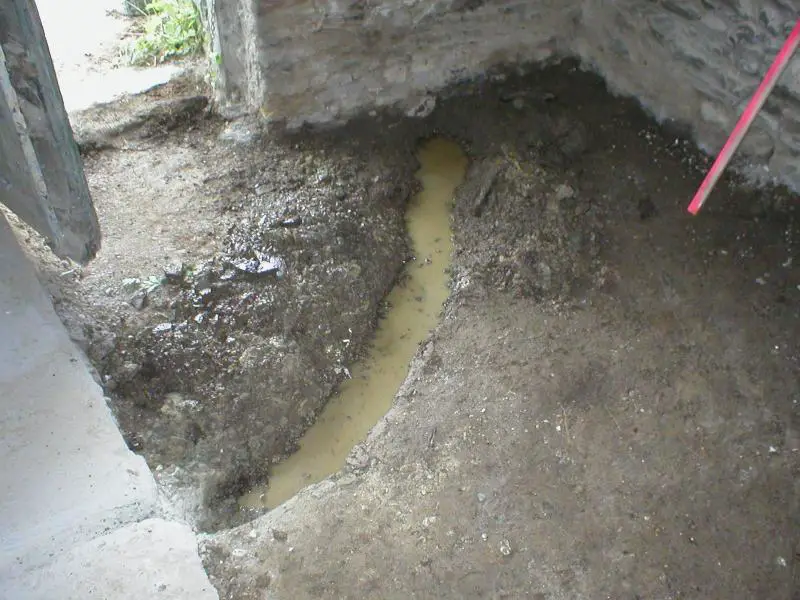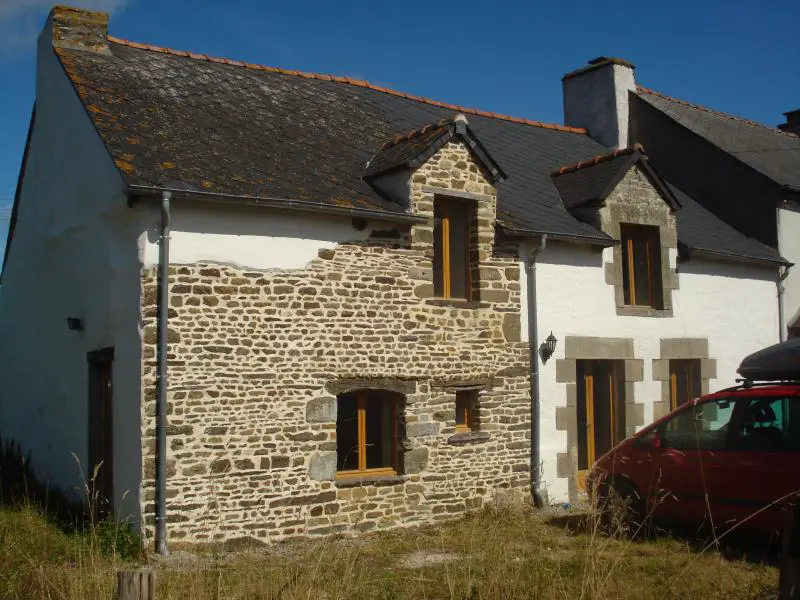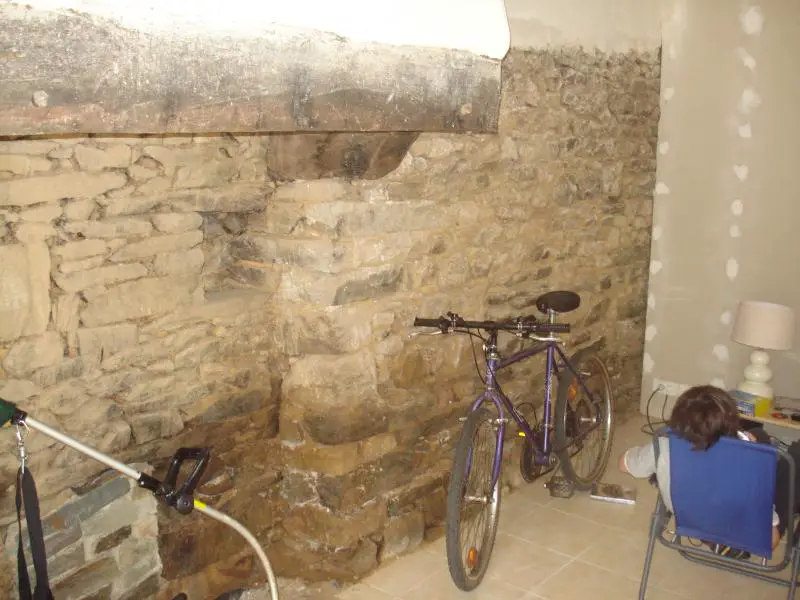Hi,
We're slowly renovating a property in France. Its old - very old, and has extremely thick walls (1m+ thick at the base). They're made from lumps of local rock (granite/shale type stuff) bound together with mud. The end wall in the lounge is giving me concern. Its the longest external wall in this room, and is exposed stone, which requires re-pointing. It contains a huge fireplace, and it going be wonderful when finished! However, this wall is now very very damp ....
However, this wall is now very very damp ....
The room had a dirt floor, which was dug out, a damp-proof membrane put down, and new concrete floor laid. Outside, there was a grotty lean-to down the entire length of the wall, which was demolished. The condition of the exterior walls gave the builder concern, and it was recommended that we render the whole outside with a lime mortar to bind it all together. It was blasted on and smoothed off. This render has now been painted with Dulux weathershield. (We noticed that the inside of the wall was starting to get damp before the outside was painted by the way). The wall is now very damp from ground level up to about 1.5m. It is uniformly damp along its length (so its not rain water coming down the chimney opening).
During the work on the dirt floor, the builder told me that one day, after a period of heavy rain, a trench that he'd dug across the floor (removing an old soil pipe) filled with water. A french drain was put in along the front of the property, and the water disappeared. We've now got french drains along the front and rear of the place. But not down this end wall that is so damp now.
I am guessing that the installation of the damp proof membrane is forcing water out sideways, and its leaching up the wall. Does this sound plausible? I am hoping that a 3rd french drain, down the length of this end wall will cure it. However, I hear all sorts of opinions regarding whether or not rising damp is a real phenomenon or not! I don't think that injecting a damp course is an option given the higgedly-piggeldy construction of the wall and its immense thickness.
Any advice?
Cheers,
Doug
We're slowly renovating a property in France. Its old - very old, and has extremely thick walls (1m+ thick at the base). They're made from lumps of local rock (granite/shale type stuff) bound together with mud. The end wall in the lounge is giving me concern. Its the longest external wall in this room, and is exposed stone, which requires re-pointing. It contains a huge fireplace, and it going be wonderful when finished!
The room had a dirt floor, which was dug out, a damp-proof membrane put down, and new concrete floor laid. Outside, there was a grotty lean-to down the entire length of the wall, which was demolished. The condition of the exterior walls gave the builder concern, and it was recommended that we render the whole outside with a lime mortar to bind it all together. It was blasted on and smoothed off. This render has now been painted with Dulux weathershield. (We noticed that the inside of the wall was starting to get damp before the outside was painted by the way). The wall is now very damp from ground level up to about 1.5m. It is uniformly damp along its length (so its not rain water coming down the chimney opening).
During the work on the dirt floor, the builder told me that one day, after a period of heavy rain, a trench that he'd dug across the floor (removing an old soil pipe) filled with water. A french drain was put in along the front of the property, and the water disappeared. We've now got french drains along the front and rear of the place. But not down this end wall that is so damp now.
I am guessing that the installation of the damp proof membrane is forcing water out sideways, and its leaching up the wall. Does this sound plausible? I am hoping that a 3rd french drain, down the length of this end wall will cure it. However, I hear all sorts of opinions regarding whether or not rising damp is a real phenomenon or not! I don't think that injecting a damp course is an option given the higgedly-piggeldy construction of the wall and its immense thickness.
Any advice?
Cheers,
Doug






